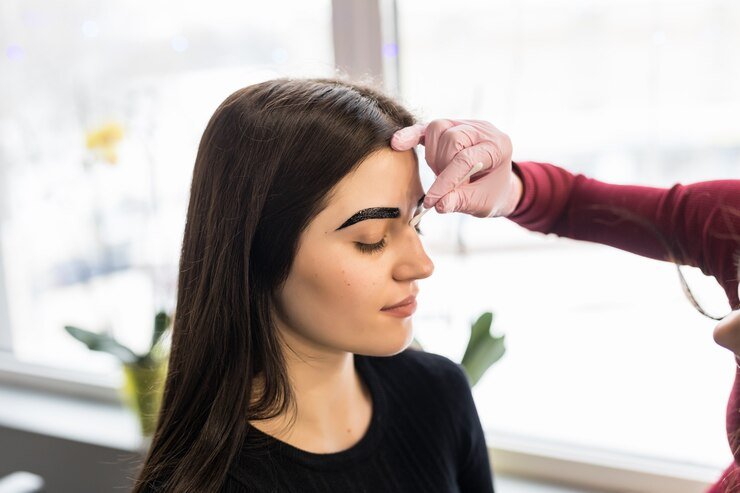Introduction
Ever experienced a sudden, unexplained blister on your skin that just wouldn’t go away? You might be dealing with Blisterata. This term might sound unfamiliar, but it’s crucial to know about it, especially if you’re facing recurrent blisters without a clear cause.
Blisterata isn’t your run-of-the-mill skin condition. Unlike blisters caused by friction or burns, Blisterata involves blisters appearing spontaneously and frequently. Curious to know more? Let’s dive into the depths of this mysterious condition.
The Science Behind Blisterata
Definition and Symptoms
Blisterata is characterized by the frequent occurrence of blisters, often without a clear external cause. These blisters can be painful, itchy, and sometimes filled with fluid. They might appear on any part of the body and vary in size from tiny pinpricks to large, fluid-filled sacs.
Common symptoms include:
- Redness and swelling around the blister
- Pain or tenderness in the affected area
- Fluid leakage if the blister breaks
- Itchiness around the blister site
Causes and Risk Factors
Understanding the root causes of Blisterata can be challenging. Unlike blisters from burns or repetitive friction, Blisterata may be linked to:
- Autoimmune disorders: The body’s immune system mistakenly attacks healthy tissue.
- Genetic predispositions: A family history of Blisterata or similar skin conditions.
- Environmental triggers: Exposure to certain chemicals or allergens.
- Infections: Viral or bacterial infections can trigger blister formation.
Types of Blisterata
Blisterata isn’t a one-size-fits-all condition. It can manifest in various forms, each with unique characteristics.
Acute Blisterata
Acute Blisterata is sudden and intense. It often presents as a rapid onset of multiple blisters, which can be painful and severely impact daily life. This type is often triggered by infections or severe allergic reactions.
Chronic Blisterata
Chronic Blisterata develops gradually and can persist for months or even years. It’s characterized by recurring blisters that may heal slowly and leave scars. This form is typically associated with autoimmune conditions or ongoing exposure to specific triggers.
Genetic Variants
Certain genetic conditions, such as Epidermolysis Bullosa (EB), can lead to Blisterata. These conditions often cause the skin to be extremely fragile, leading to blisters from minor friction or trauma.
Diagnosing Blisterata
Medical Evaluation
If you suspect Blisterata, the first step is to consult a healthcare professional. They will perform a thorough examination of the blisters, including their size, location, and appearance. A detailed medical history is also crucial to identify any potential triggers or underlying conditions.
Diagnostic Tests
Several tests may be needed to confirm Blisterata, including:
- Skin biopsy: A small sample of the blistered skin is examined under a microscope.
- Blood tests: These can detect underlying autoimmune conditions or infections.
- Allergy tests: Identifying potential allergens that may trigger blister formation.
Common Misdiagnoses
Blisterata can be tricky to diagnose accurately. It often gets confused with other skin conditions like eczema, dermatitis, or fungal infections. Each has distinct features and requires different treatment approaches. This underscores the importance of seeing a specialist who can differentiate between these conditions.
Treatment Options for Blisterata
Over-the-Counter Solutions
For mild cases, over-the-counter (OTC) treatments can provide relief. These include:
- Topical antibiotics: To prevent infection if the blister breaks.
- Pain relievers: To reduce discomfort and swelling.
- Hydrocortisone cream: To alleviate itching and inflammation.
Prescription Medications
In more severe cases, prescription medications might be necessary. These can include:
- Corticosteroids: To reduce inflammation and suppress the immune response.
- Antibiotics: If there’s a bacterial infection.
- Immunosuppressants: For autoimmune-related Blisterata.
Home Remedies
Simple home remedies can also help manage symptoms. Applying aloe vera, honey, or coconut oil can soothe the skin and promote healing. Keeping the affected area clean and covered can prevent infections and further irritation.
Lifestyle and Blisterata
Diet and Nutrition
Eating a balanced diet rich in vitamins and minerals supports skin health and overall well-being. Foods high in antioxidants, such as fruits and vegetables, can help reduce inflammation and promote healing.
Skin Care Tips
Gentle skin care is essential for managing Blisterata. Use mild, fragrance-free cleansers and moisturizers to avoid irritating the skin. Protecting the skin from excessive sun exposure and harsh chemicals is also crucial.
Avoiding Triggers
Identifying and avoiding triggers can prevent flare-ups. This might include steering clear of certain fabrics, soaps, or environmental factors that worsen the condition.
Alternative and Complementary Therapies
Herbal Remedies
Herbal treatments like chamomile, calendula, and lavender can be soothing. They have anti-inflammatory properties that help reduce redness and discomfort.
Acupuncture
Acupuncture, a traditional Chinese medicine practice, may provide relief by balancing the body’s energy and reducing stress, which can be a trigger for Blisterata.
Mind-Body Techniques
Stress management techniques like meditation, yoga, and deep breathing exercises can be beneficial. Stress often exacerbates skin conditions, so managing it effectively is key to controlling Blisterata.
Living with Blisterata
Psychological Impact
Living with a chronic skin condition like Blisterata can take a toll on mental health. Feelings of frustration, embarrassment, or anxiety are common. Seeking support from mental health professionals or support groups can be invaluable.
Support Systems
Having a strong support system can make a significant difference. Friends, family, and online communities can provide encouragement and practical advice for managing daily challenges.
Daily Management Tips
Creating a daily routine that includes proper skin care, medication, and stress management can help keep Blisterata under control. Staying informed about the condition and staying proactive in your care is essential.
Prevention Strategies
Proactive Measures
Taking proactive steps can minimize the risk of flare-ups. This includes maintaining good hygiene, avoiding known triggers, and staying hydrated.
Early Intervention
Recognizing the early signs of a flare-up and addressing them promptly can prevent severe outbreaks. Keeping a symptom diary can help identify patterns and triggers.
Blisterata in Different Age Groups
Children
Children with Blisterata may experience blisters that interfere with play and daily activities. Gentle skin care and appropriate treatment are crucial for managing their symptoms effectively.
Adults
In adults, Blisterata can impact work and social life. Adopting a comprehensive management plan that includes medical treatment and lifestyle adjustments is key.
Seniors
Older adults may face additional challenges, such as slower healing and a higher risk of infections. Tailored care that considers these factors is important for managing Blisterata in seniors.
Impact on Quality of Life
Physical Challenges
The physical symptoms of Blisterata, like pain and restricted mobility, can be debilitating. Adapting daily activities to minimize discomfort is essential for maintaining quality of life.
Emotional and Social Aspects
Blisterata can affect self-esteem and social interactions. Building confidence and seeking supportive relationships can help mitigate these impacts.
Frequently Asked Questions (FAQs) about “Blisterata”
1. What is Blisterata?
Answer: “Blisterata” could refer to various things depending on the context. It might be a term used in medical science, botany, a product name, or even a conceptual idea. More context is needed to provide a precise definition.
2. Is Blisterata a medical condition?
Answer: In a medical context, “blisterata” could hypothetically refer to a condition characterized by blisters. However, without specific medical literature backing this term, it could be a placeholder or coined term.
3. Could Blisterata be a type of plant or fungus?
Answer: In botany or mycology, “blisterata” might describe a species or genus with blister-like characteristics. For example, some plants or fungi develop blister-like formations as part of their growth or in response to environmental conditions.
4. Is Blisterata a product or brand?
Answer: If “blisterata” is related to a product or brand, it could be the name of a pharmaceutical product, skincare item, or even a novel concept in consumer goods. Details about the product or service it represents would clarify its use.
5. How is Blisterata used in everyday language?
Answer: If “blisterata” is a newly coined term, it might not have widespread usage yet. Its application could be niche or emerging in specific fields or communities.
Conclusions about “Blisterata”
- Versatile Term: “Blisterata” appears to be a versatile term that could have different meanings in various contexts such as medical science, botany, or as a brand name. Its precise definition requires context.
- Potential for Niche Application: Given its undefined nature in common usage, “blisterata” might be a term with niche or emerging applications, potentially in specialized fields or as a creative concept.



